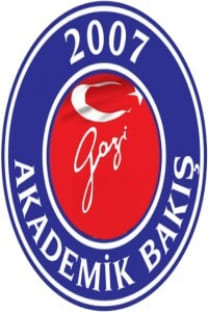Rusya’nın Dengeleme Oyununa Dönüşü
Rusya, Libya, Arap Baharı, Güç Dengesi, Suriye
Russia is Back to the Balancing Game
Russia, Libya, Arab Spring, Balance of Power, Syria,
___
- AMBROSIA, Thomas, “The Russo-American Dispute over Invasion of Iraq: International Status and the Role of Positional Goods”, Europe-Asia Studies, Vol. 57, No. 8, December 2005, 1189-1210.
- AMOUR, Philipp O., “Introduction: The Regional Order in the Gulf Region and the Middle East.”, Philipp O. Amour (Ed.), The Regional Order in the Gulf Region and the Middle East. Regional Rivalries and Security Alliances, 1–25, Palgrave MacMillan, 2020. https://doi.org/10.1007/978-3-030-45465-4_1.
- AMOUR, Philipp O., “Israel, the Arab Spring, and the unfolding regional order in the Middle East: a strategic assessment”, British Journal of Middle Eastern Studies, 44:3, 2017, 293-309.
- AMOUR, Philipp O., (Ed.) The Middle East Reloaded: Revolutionary Changes, Power Dynamics, and Regional Rivalries since the Arab Spring, St. James’s Studies in World Affairs, Academica Press, Washington, DC 2018.
- AMOUR, Philipp O., The Regional Order in the Gulf Region and the Middle East. Regional Rivalries and Security Alliances, Palgrave MacMillan, USA 2020. https://doi.org/10.1007/978-3-030-45465-4.
- AMOUR, Philipp O., “Regional Rivalries and Security Alliances in the Gulf Region and the Middle East.”, Philipp O. Amour (Ed.), The Regional Order in the Gulf Region and the Middle East. Regional Rivalries and Security Alliances, USA 2020. https://doi.org/10.1007/978-3-030-45465-4_14.
- ISSN: 1307-9778
- Yayın Aralığı: 2
- Başlangıç: 2007
- Yayıncı: Hale Şıvgın
Economic Aspects of Slavery in the Triangular Trade in the Early Modern Period
1923-1950 Arası Dönemde Ankara Kentleşmesi ve Sorunları
İttifakın Bedeli: Birinci Dünya Savaşı’nda Osmanlı Kamuoyunda Rus Karadeniz Filosu Sorunu
Kitap Değerlendirme: Zoraki İttifaktan Yol Ayrımına İttihat-Terakki ve Ermeniler
Türk Basınına Göre Geçici Irak Hükümet Konseyi’nin Oluşum Sürecinde Irak Türkmenleri ve Türkiye
Batılı Gezginlerin Gözlem ve Değerlendirmelerinde Ankara Keçisi
Amerikan Basınında Sultan Abdüzaziz Dönemi
Amerikan Belgelerinde Türkiye’nin İç Politikası: Ecevit ve Demirel Hükümetleri Dönemi (1974 - 1980)
I. Dünya Savaşı’ndan Önce Türk Boğazlarına Yönelik Rus Talepleri ve İngiltere’nin Tutumu (1908-1914)
